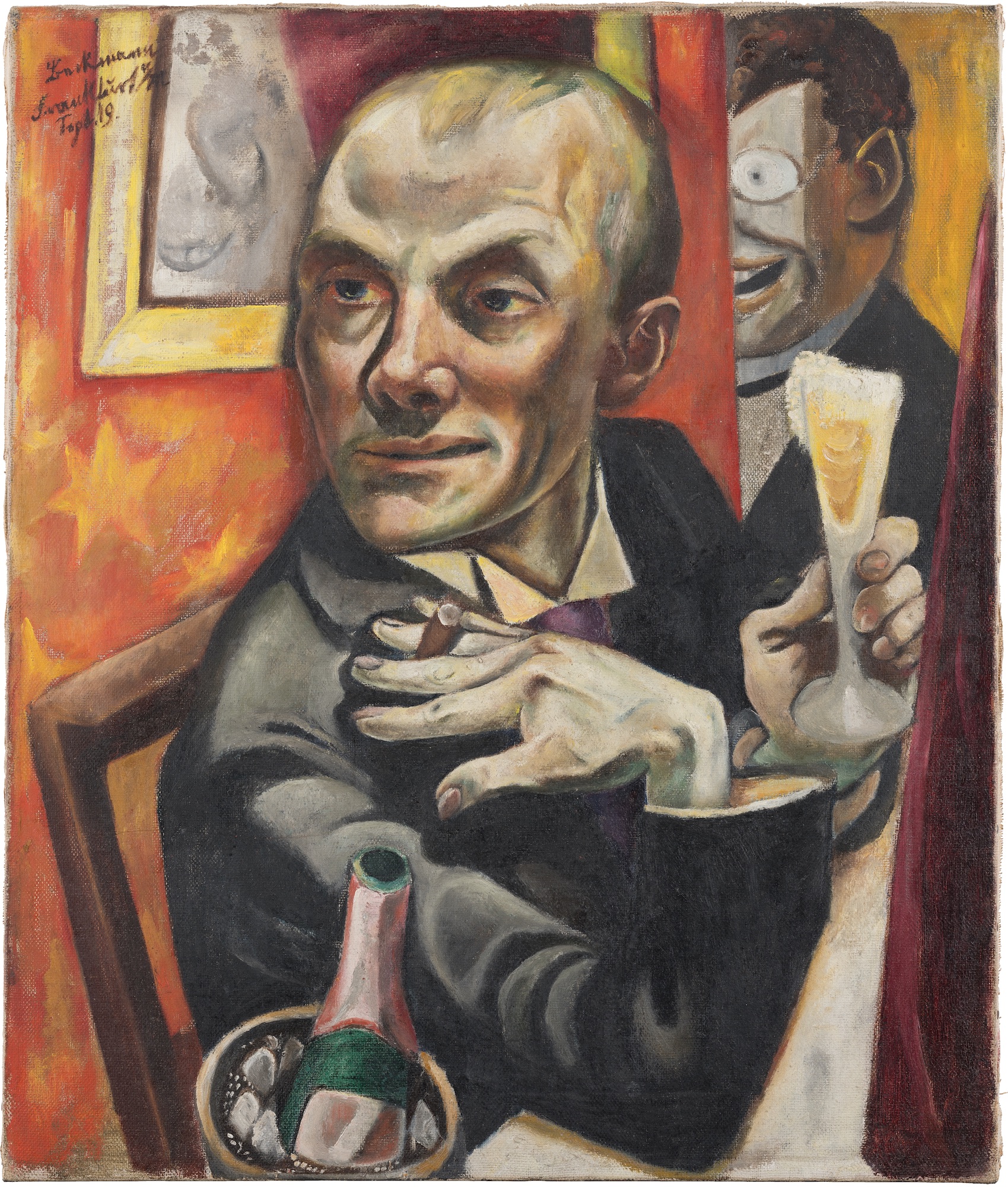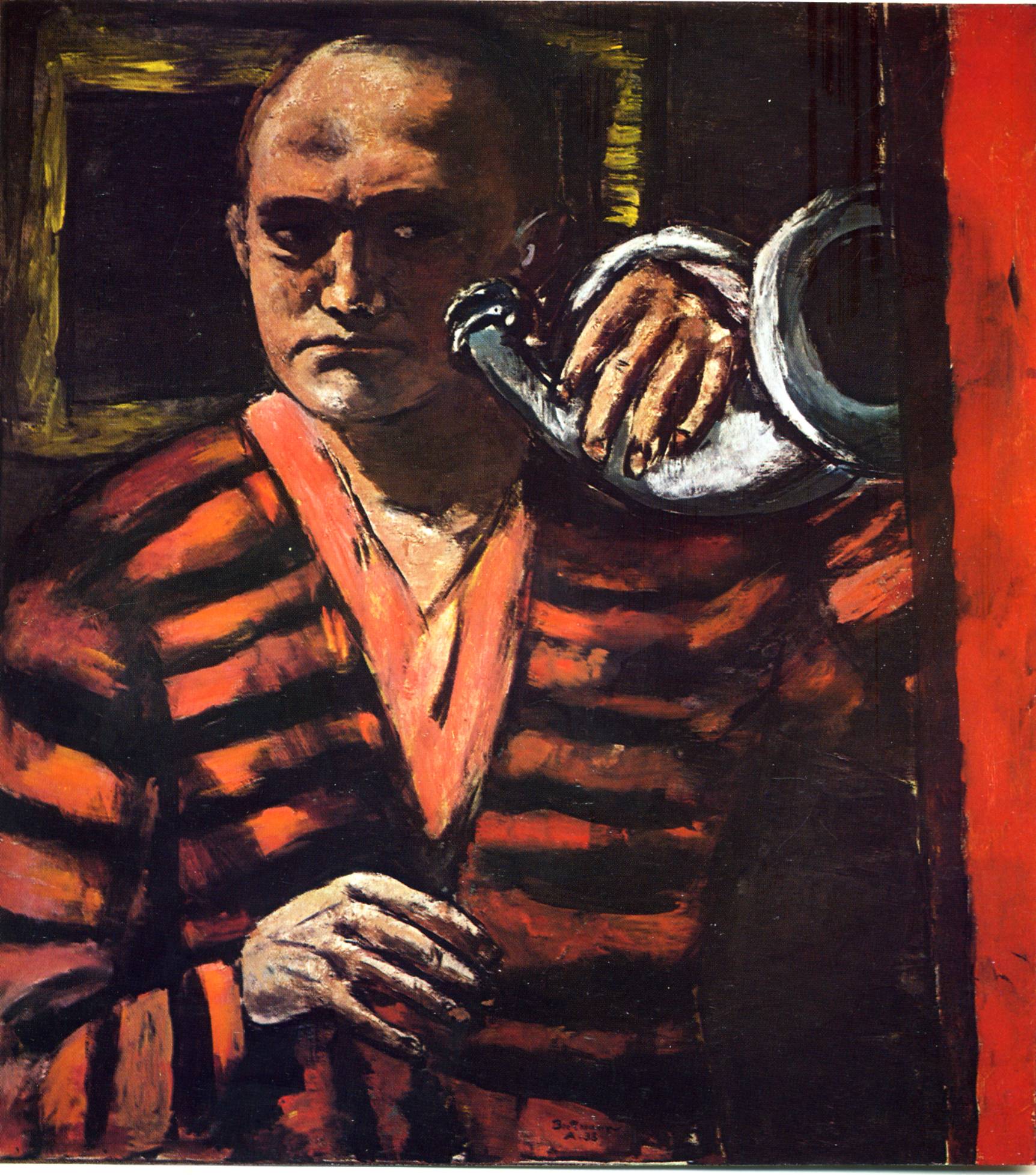Self-Portrait with Champagne Glass is the third self-likeness Max Beckmann that was executed after World War I. Previously portraying himself as a medical orderly and as an artist in the studio, here he appears as an elegant dandy in a tuxedo at the bar of a nightclub. Beckmann was thus drawing on a richly traditional motif: depictions of jolly drinkers and revelers were especially popular in the Dutch and Flemish painting of the 17th century. This portrait, however, does not convey an impression of boisterous gaiety. The artist’s head resembles a skull, his skin has a greenish hue, and shades of red and yellow shimmer in his eyes. His body cramps itself into the constricted pictorial space with a cramped, almost contorted pose. A grotesque-looking character laughs in the background; in the mirror at the left, the same face laughs back like a menacing echo.
The period immediately following World War I was shaped by tremendous upheaval in politics and society. While wartime profiteers flaunted their wealth in nightclubs, cabarets, and luxury hotels, countless others fell prey to poverty. Beckmann here adopts the ambiguous identity of the sickly bon vivant, trying to take some enjoyment out of life in what is probably the bar of the Frankfurter Hof in Berlin, where (according to contemporary witnesses) his drink of choice was champagne. It would come to be his classic role: that of the aloof bourgeois, the detached observer holding a mirror up to society.
We present today's painting thanks to the Städel Museum.
P.S. Did you like this self-portrait? Then you have to see the 12 most iconic and important self-portraits in art history!


 Max Beckmann
Max Beckmann